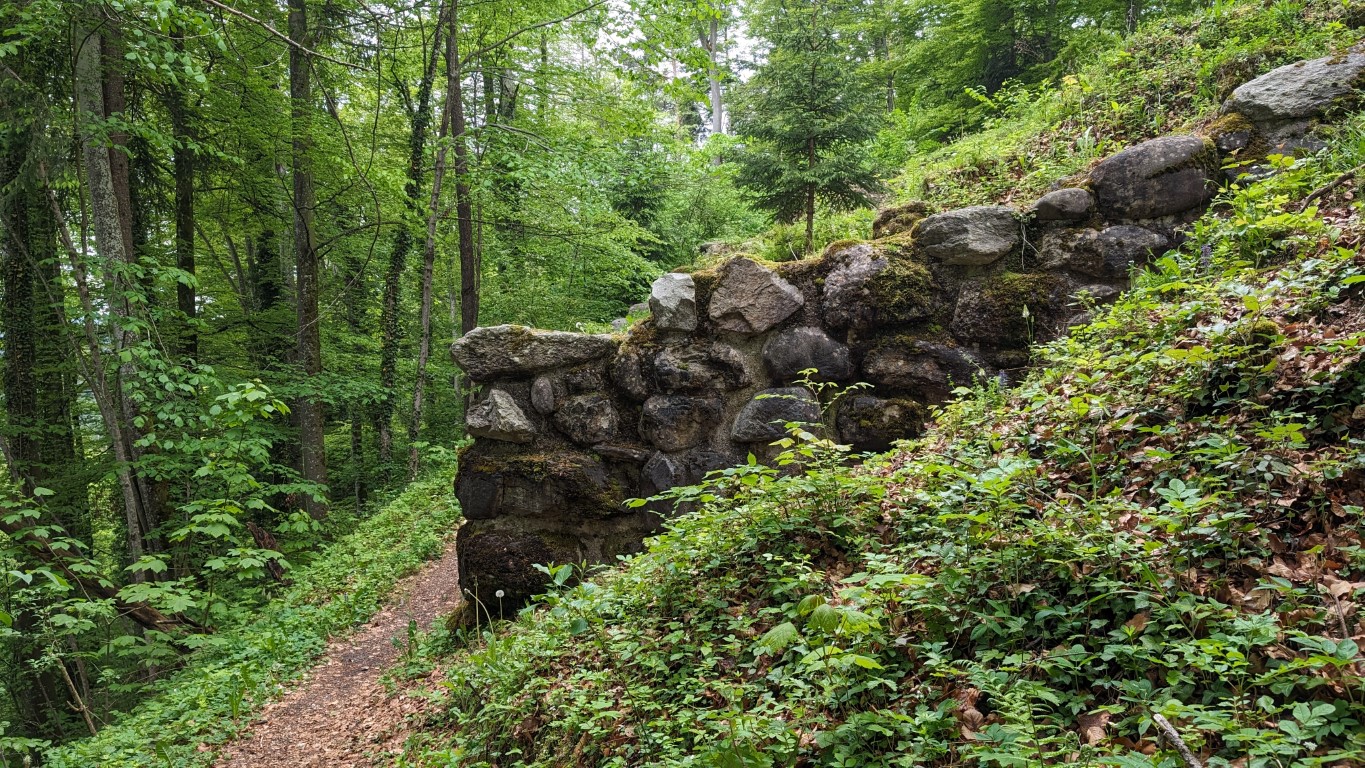In the rolling hills of the eastern Swiss countryside, where history is lost in the shadows of time, stands the small ruin of Tannegg. Once a proud testament to medieval splendour and defence, it stands as a silent sentinel on a rocky outcrop west of the charming village of Dussnang. An air of mystery and history surrounds this spur castle, hidden in the Thurgau municipality of Fischingen, giving it an aura of mystery and venerability.
background
In the turmoil of past centuries, Tannegg Castle was built as a symbol of power and administration, built by none other than the venerable Bishop of Constance, Heinrich von Tanne, who held office between 1233 and 1248. Its imposing outer bailey area suggests that it once housed more than just a castle, but an entire small town. For a century, from 1300 to 1402, the Tannegg bailiwick was firmly in the grip of the Toggenburg family, a witness to an eventful history.
But the shadows of war, those terrible Appenzell conflicts, left their scars on the walls and in the annals. In 1407, during that dark era, the castle and the town of Tannegg fell victim to the wrath of the Appenzell "Burgenbruch-Runde", a sad chapter in the history of the region.
Although once intended to be the heart of Hinterthurgau, fate seemed to have a different path in mind. In 1693, far from the centre of episcopal rule, the castle and the Tannegg office found a new owner in the venerable Fischingen monastery, just as the bells of change rang across the hills of eastern Switzerland.
The remains of the once proud castle complex defied time until 1837, when the main tower finally fell, but its stones lived on, continuing their history in the foundations of newly built bridges.
Access
The ruins are freely accessible.








